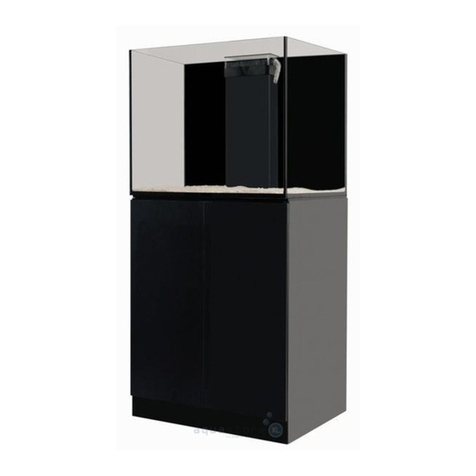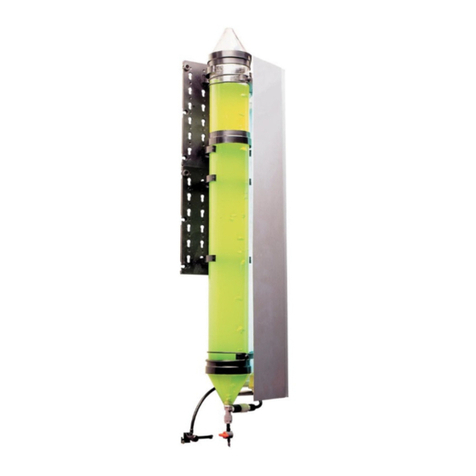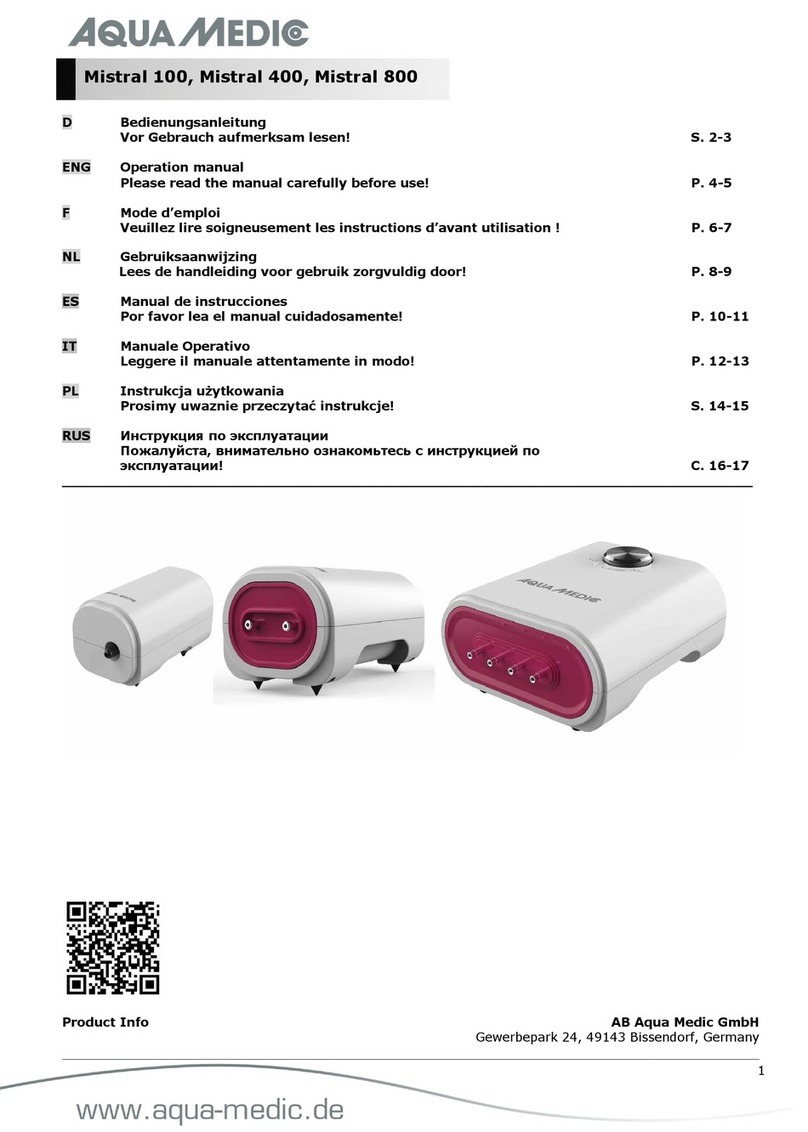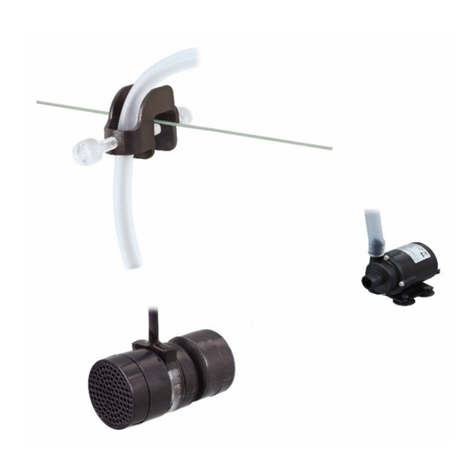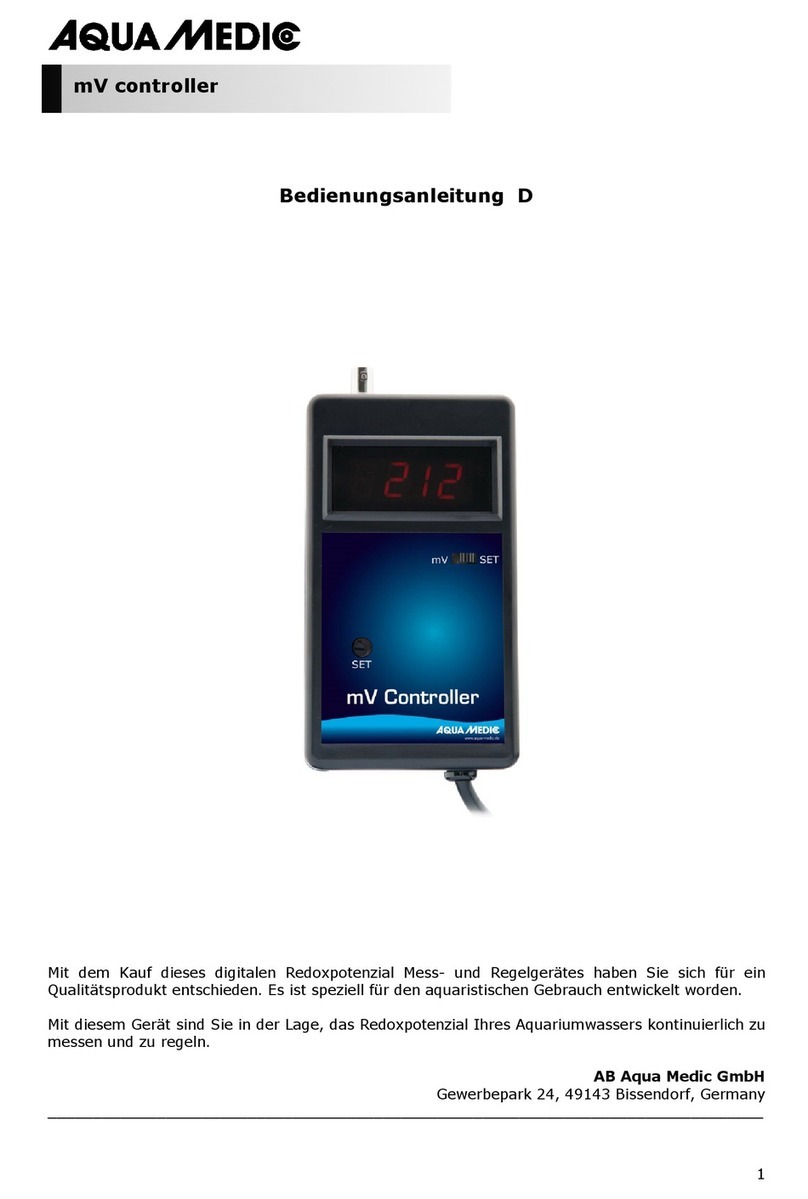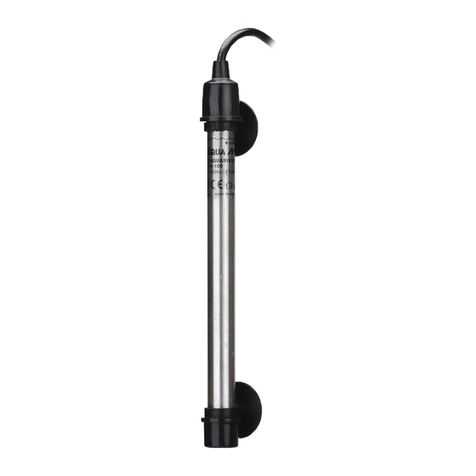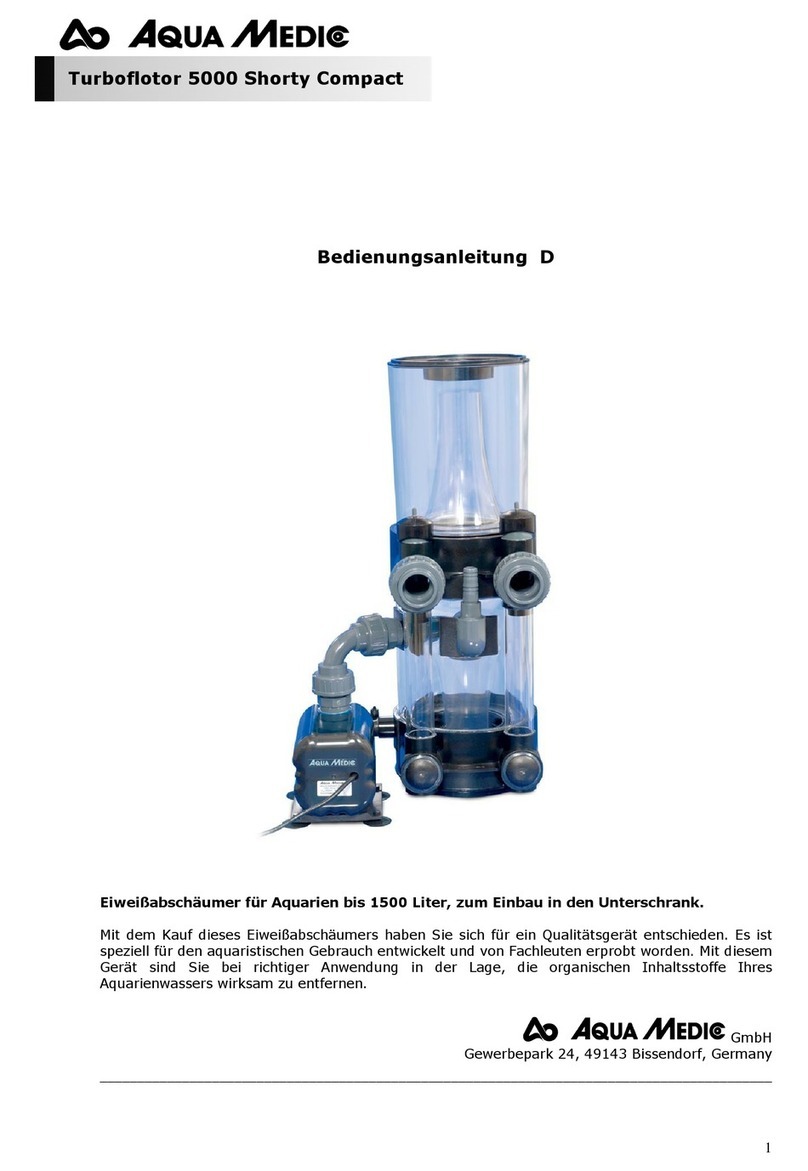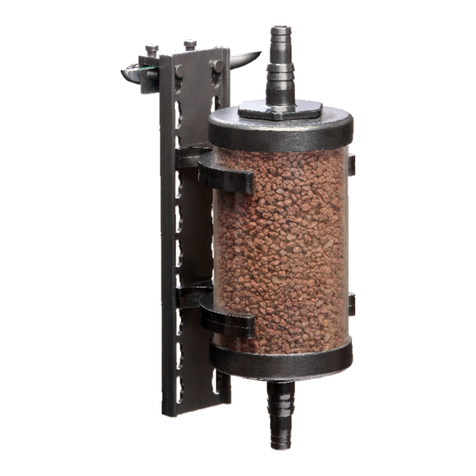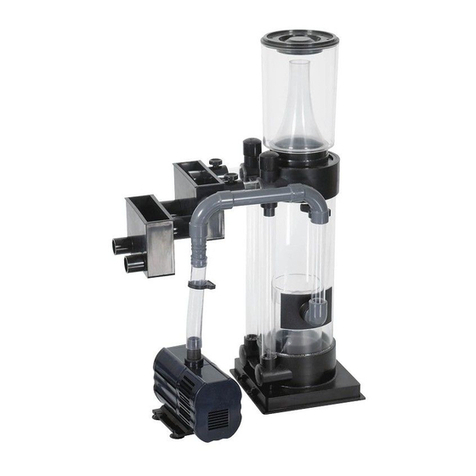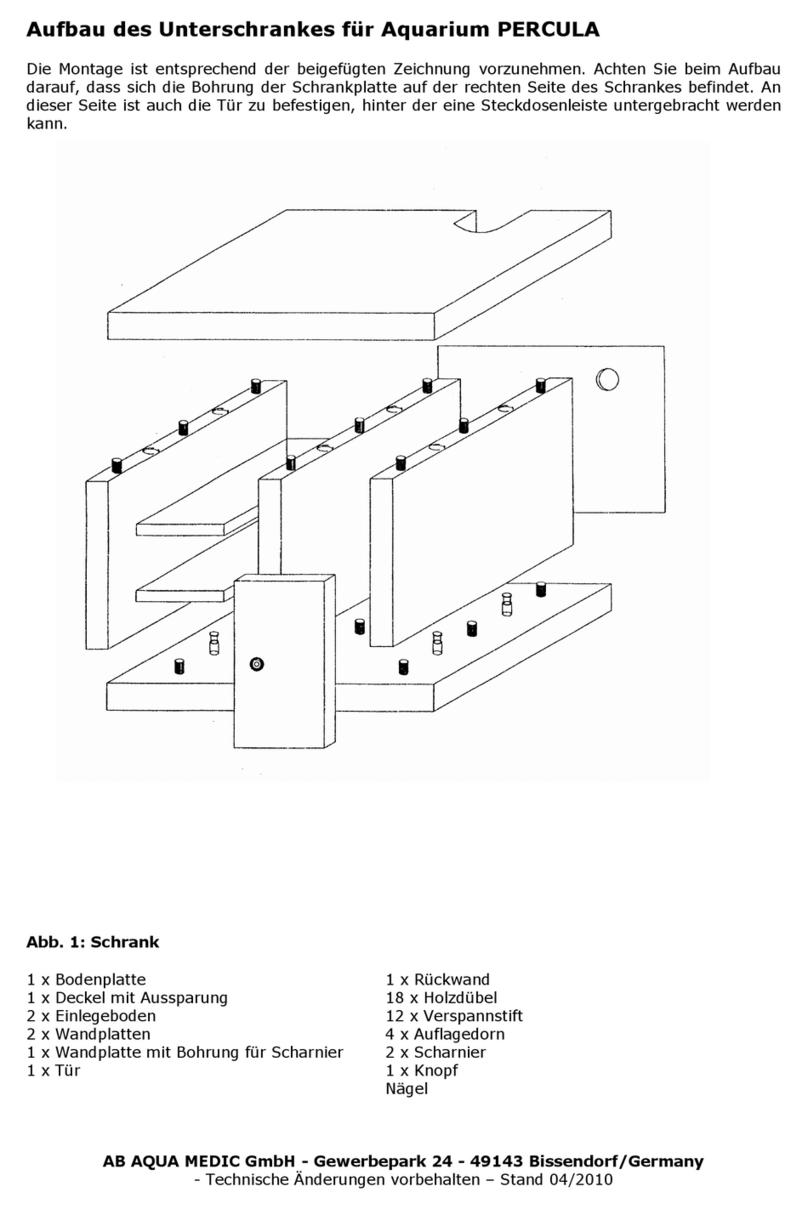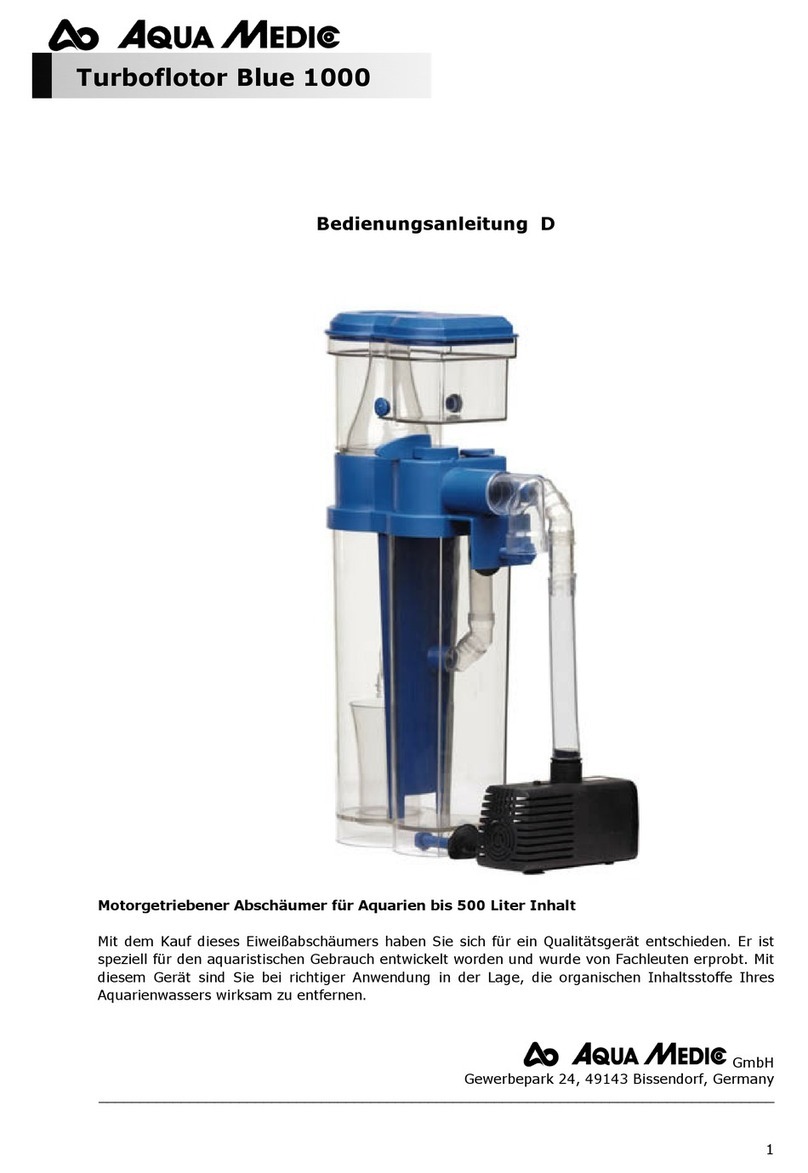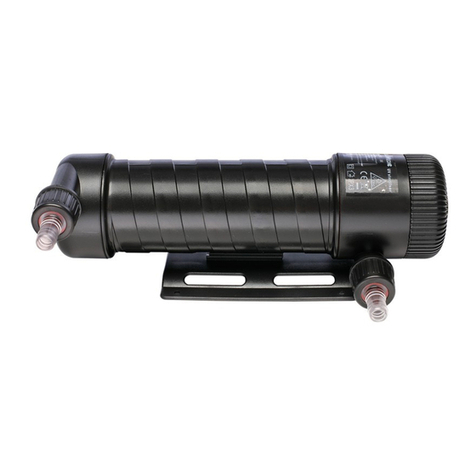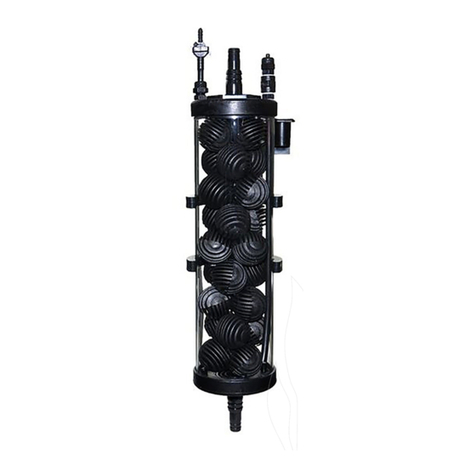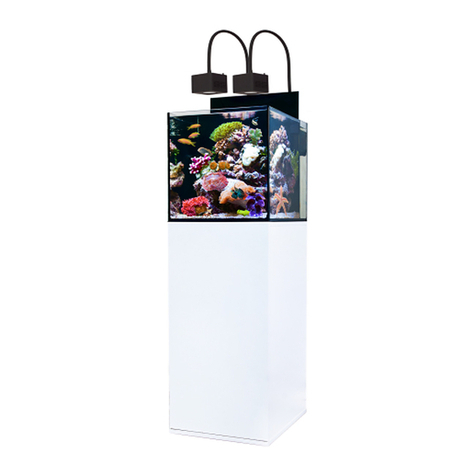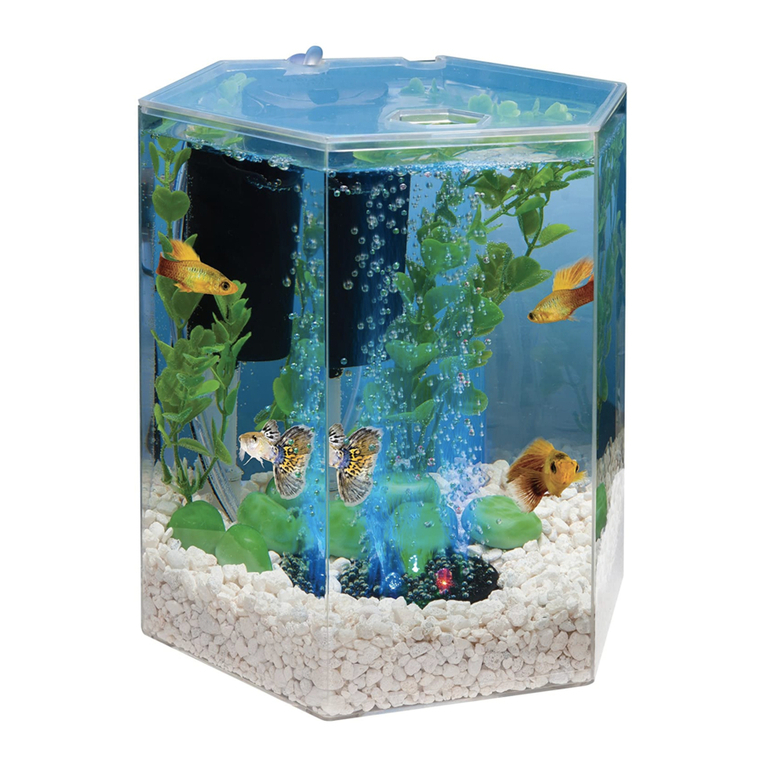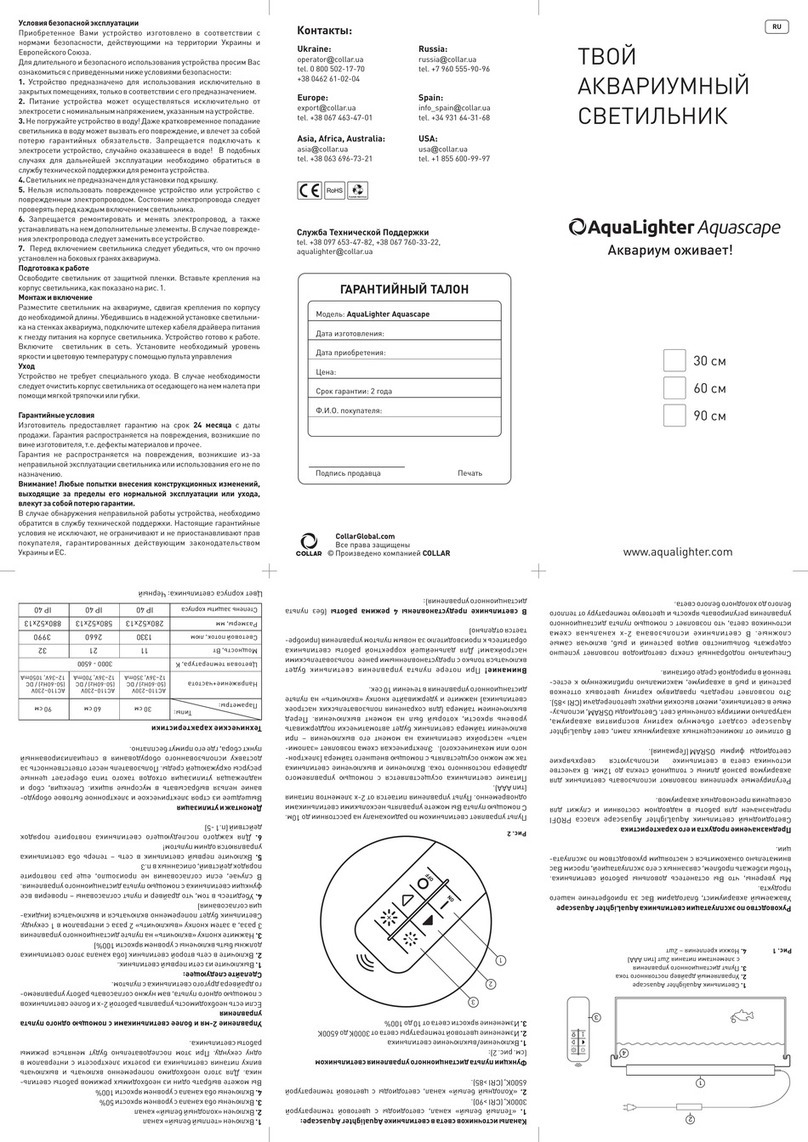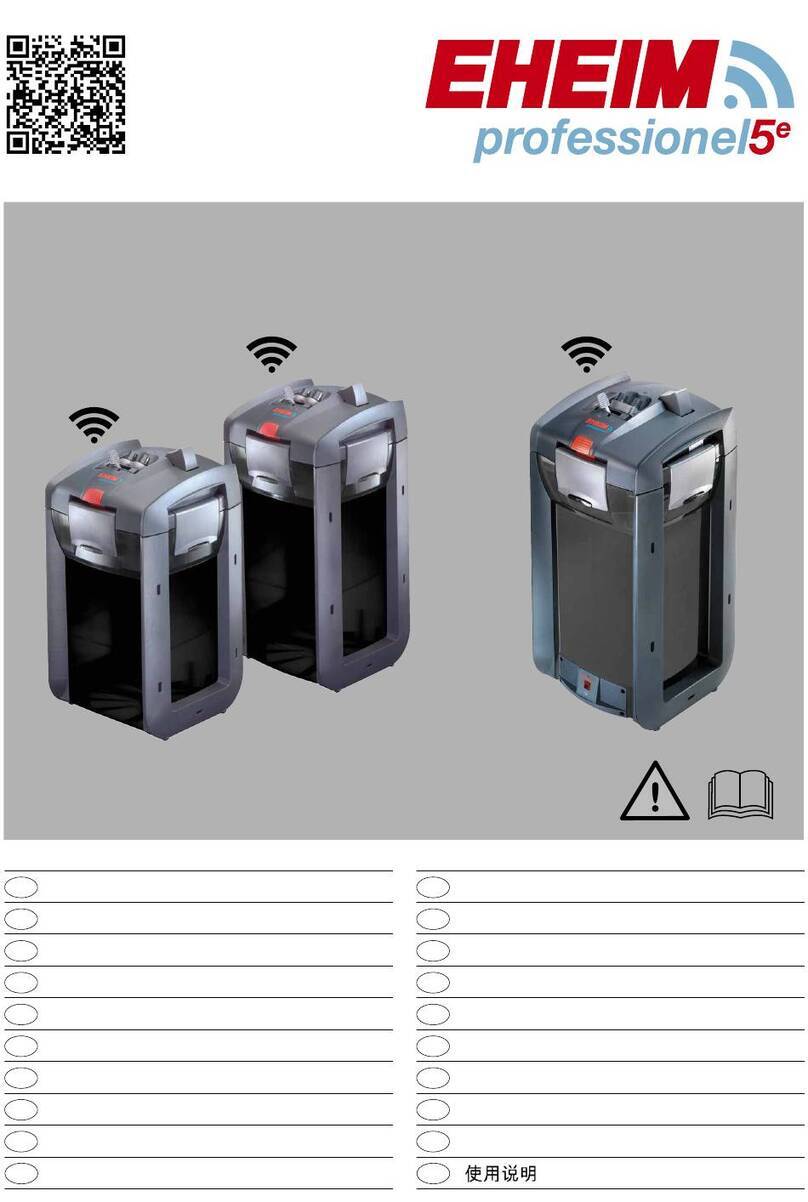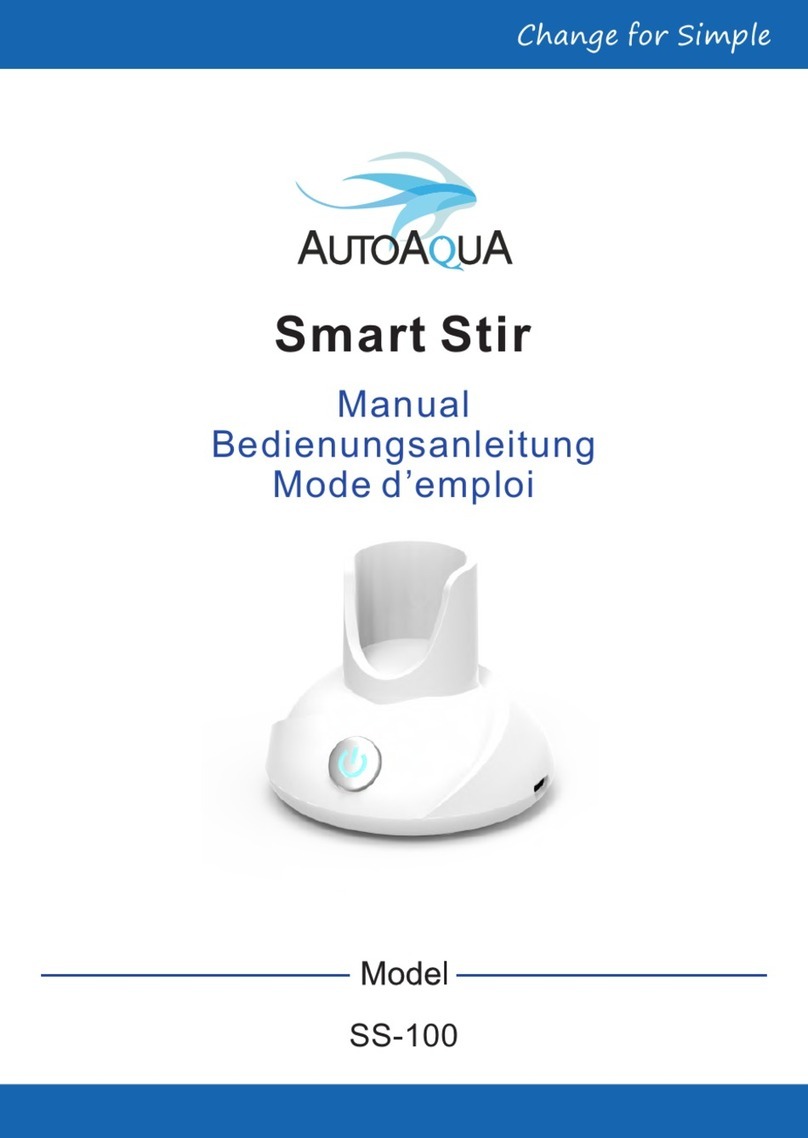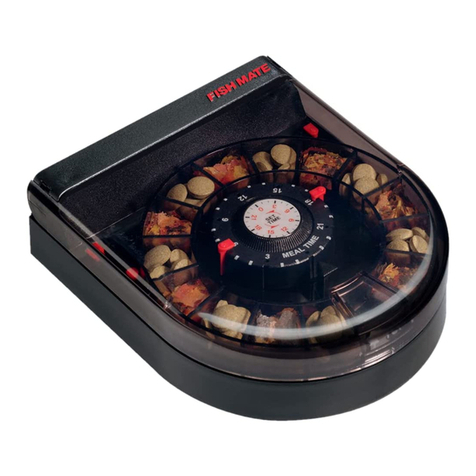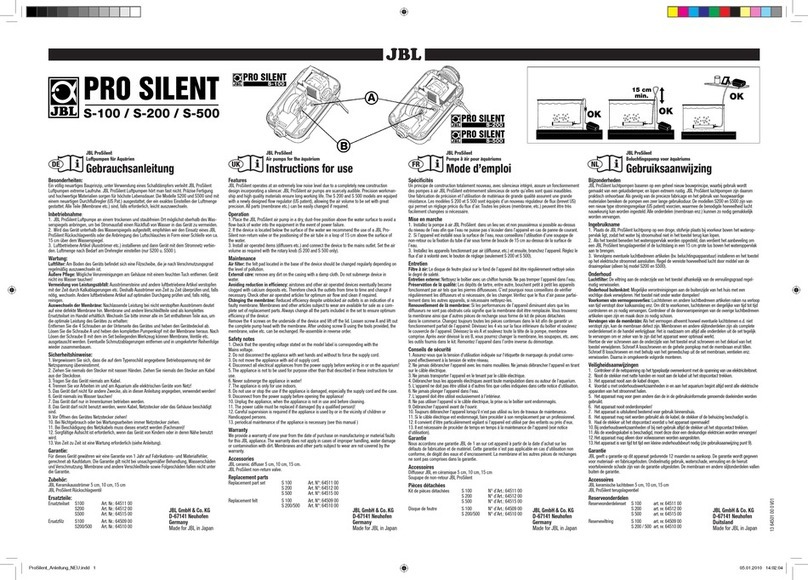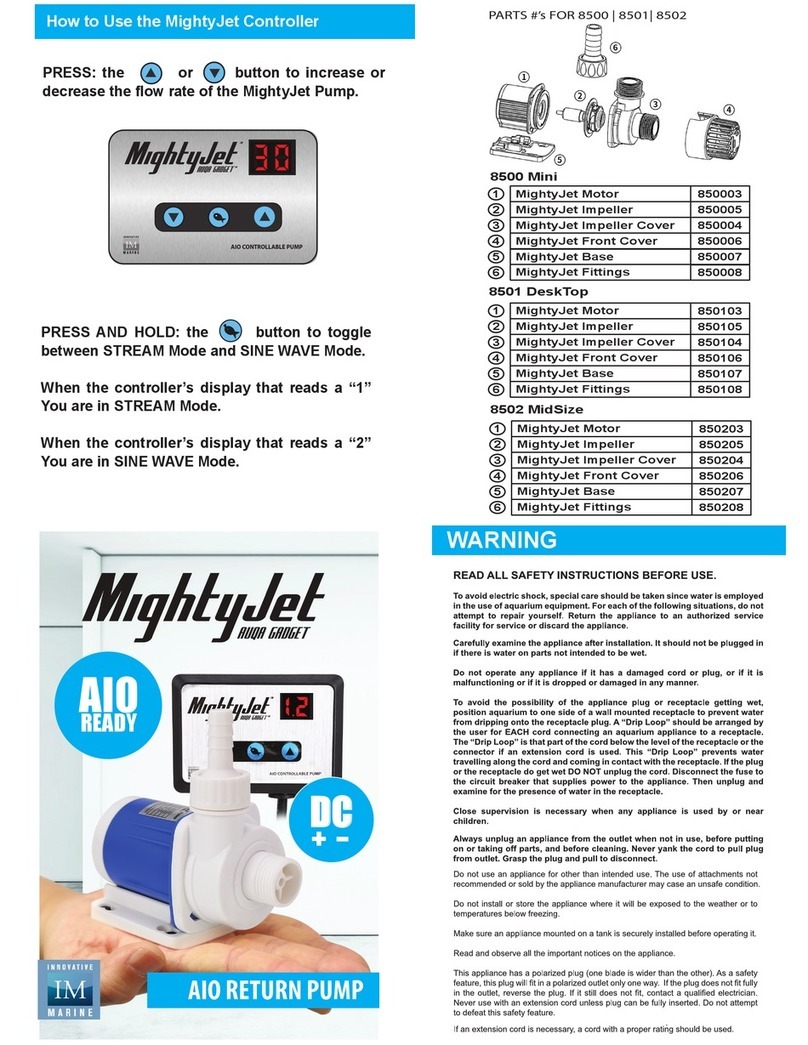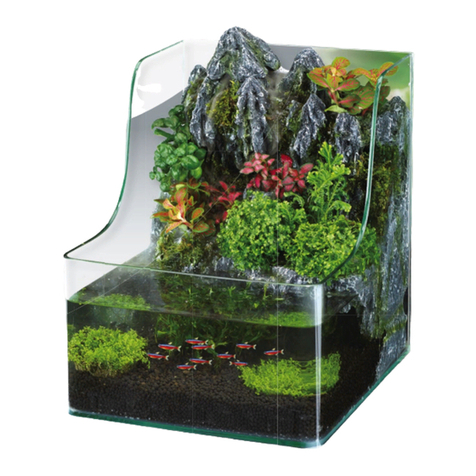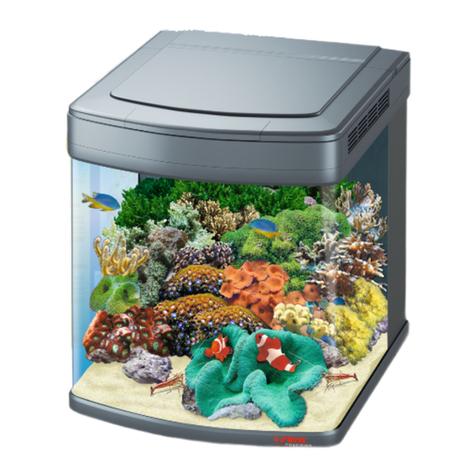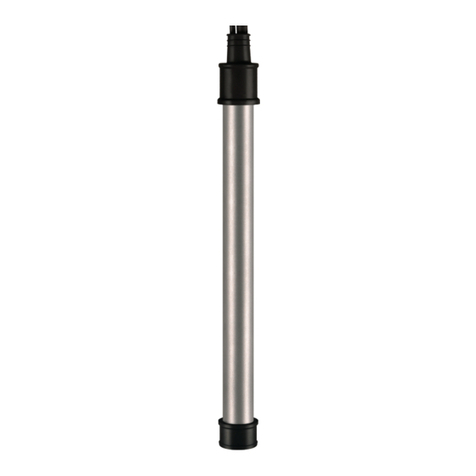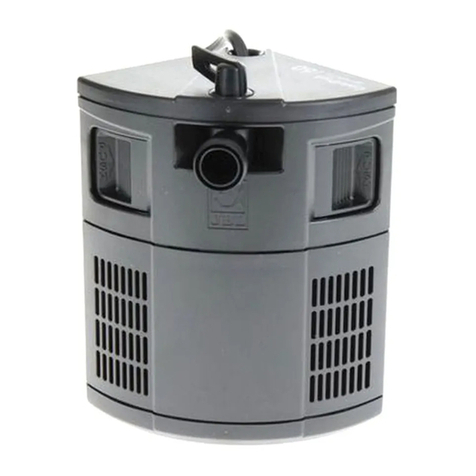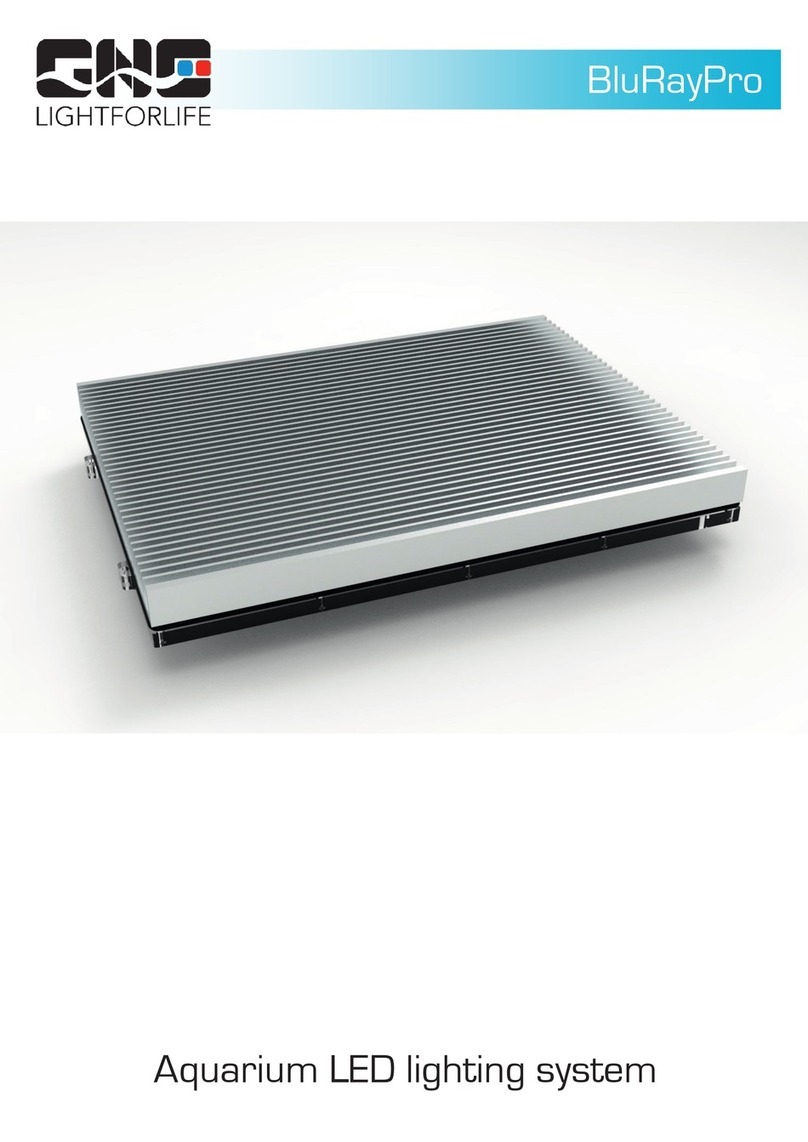
4
Das Bakterium Nitrosomonas oxidiert Ammonium zu Nitrit, das Bakterium Nitrobacter das Nitrit
weiter zum Nitrat.
Ammonium + Sauerstoff ----- > Nitrit + Sauerstoff ----> Nitrat
(Nitrosomonas) (Nitrobacter)
Beim Nitrat endet nun in den meisten Aquarien der Stickstoffstoffwechsel. Nitrat reichert sich daher
im Aquarienwasser an. Lediglich Wasser flanzen und Algen sind im Aquarium in der Lage, dieses
Nitrat weiterzuverarbeiten.
Was bewirkt Nitrat im Aquarium?
-Überdüngung: Das Aquarium wird überdüngt, das Algenwachstum nimmt überhand und kann
nicht kontrolliert werden.
-Schädigung der Tiere: Insbesondere wirbellose Tiere im Meerwasseraquarium reagieren
negativ auf höhere Nitratkonzentrationen.
3. Arbeitsweise des Nitratreductors NR 400
Im Aqua Medic Nitratreductor wird das Aquarienwasser unter Sauerstoffabschluss behandelt. Bei
Abwesenheit von Sauerstoff sind viele Bakterien in der Lage, Nitrat als Ersatz von Sauerstoff zum
Atmen zu nutzen:
2 Nitrat ----> Stickstoffgas + 3 Sauerstoff
2 NO3 ----> N2 + 3 O
2
Der Sauerstoff wird zur Atmung genutzt, der Stickstoff ins Wasser ausgeschieden. Stickstoffgas
(N2) ist ein natürlicher Bestandteil der Luft und völlig unschädlich.
Beim Nitratabbau handelt es sich somit um einen reinen Atemvorgang. Zusätzlich benötigen die
Bakterien genauso wie andere Lebewesen Nahrung. Aus diesem Grunde müssen die
nitratabbauenden Bakterien gefüttert werden. Dieses Futter enthält organische Substanzen, die
von den Bakterien restlos verwertet werden können. Als Abfall rodukt entsteht CO
2
.
Zur Fütterung im Nitratreductor können entweder das Tablettenfutter Denimar oder die
Futterbälle Deniballs genutzt werden.
Der Durchfluss durch den Nitratreductor geschieht äußerst langsam. Dies unterscheidet ihn von
herkömmlichen Aquarienfiltern, in denen das Wasser meist einmal ro Stunde oder noch öfter
gefiltert wird. Das Wasser sollte im Nitratreductor eine Aufenthaltszeit von wenigstens vier Stunden
haben. Dafür reicht es aus, wenn das Aquarienwasser nur einmal ro Woche durch den Filter
geleitet wird. Ist der Filter richtig eingestellt, verlässt ihn das Wasser nahezu nitrat- und nitritfrei.
4. Aufbau des Nitratreductors NR 400
Der Aqua Medic Nitratreductor besteht aus einem Reaktionsbehälter (1) mit einem Volumen von
ca. 2,3 l. Als Aufwuchsmaterial für die Bakterien werden Aqua Medic Deniballs eingesetzt. Diese
schaffen ein für die Denitrifikation ideales Mikroklima. Zur Vermeidung toter Zonen wird das
Wasser im Nitratreductor intern umgewälzt. Dazu ist eine Umwälz um e im Deckel untergebracht.
In Nitratfiltern ohne Durchmischung, insbesondere bei Geräten, in denen das Wasser eine lange
Fließstrecke zurücklegen muss, besteht die Gefahr, dass der Filter nicht gleichmäßig durchströmt
wird. Es bilden sich Zonen mit extrem niedrigem Redox otential und Schwefelwasser roduktion
(der Filter beginnt unangenehm zu riechen). Auf der anderen Seite können Zonen mit zu starker
Durchströmung entstehen, wo das Nitrat nur bis zum Nitrit reduziert wird. In jedem Fall herrschen
im Filter überall andere Reaktionsbedingungen, was die Einschätzung des Arbeits unktes durch
Messung des Redox otentials unmöglich macht.

